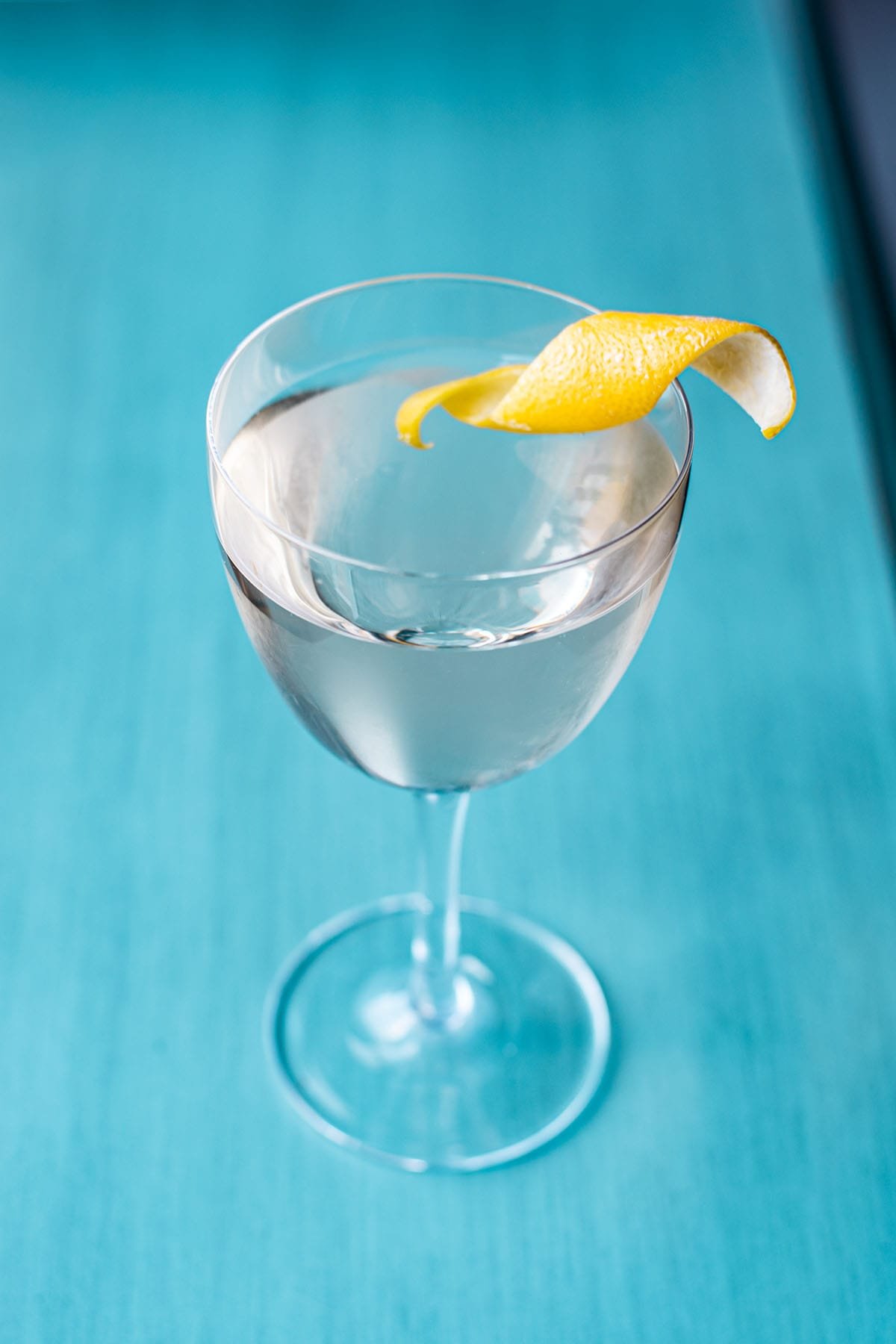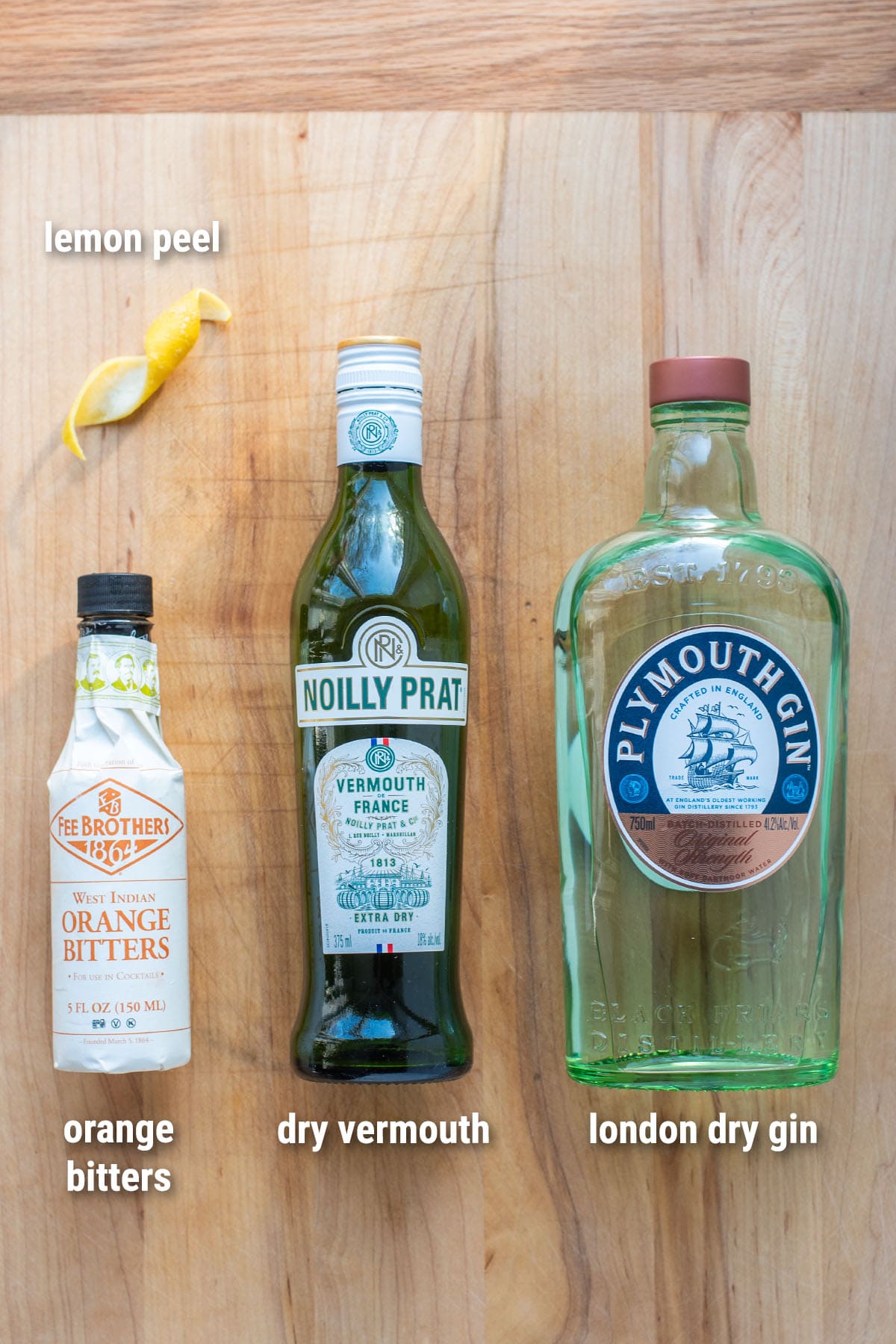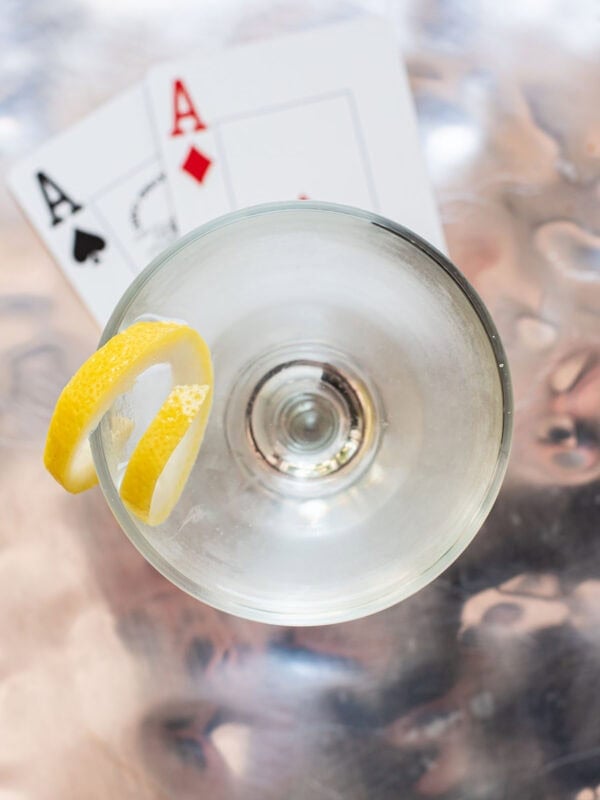This post may contain affiliate links. Please read our disclosure policy.
The classic Martini is made with gin and dry vermouth. While many other variations of the Martini have spun off into various cocktails using fruit, espresso, and chocolate, this is the original foundational recipe that started it all.

Table of Contents
Brief History
Although the exact origins are somewhat murky, the Martini is believed to have evolved from the Martinez, which was popular in the 19th century. The Martinez, later inspiring the Manhattan, was a mix of gin, sweet vermouth, maraschino liqueur, and bitters.
Over time, the Martinez began to evolve into a simpler, drier cocktail. By the late 19th century, dry gin and dry vermouth became the primary ingredients, leading to the creation of the classic dry Martini.
If you’re looking for more classic gin cocktails, you must try the Aviation and the Last Word!
Ingredient Notes & Substitutions

- Gin: London dry gin is the classic gin to go for. That being said, you can experiment with flavored gins for unique botanical character. There are so many options to choose from.
- Dry vermouth: dry vermouth is a fortified wine that’s low in sugar and high in alcohol. Sweet vermouth is not a suitable substitute as it’s red in appearance, richer, and sweeter. I recommend Dolin or Noilly Prat.
- Orange bitters and lemon twist: these are both optional ingredients based on a very common (and my preferred) variation of the cocktail. You can read more about the other variations below
See the recipe card for full information on ingredients and quantities below.
Popular Cocktail Variations
There are numerous variations of the Martini; depending on who you ask, you will get various ingredients and proportions. Here are a few of the most common variations:
- Lemon twist or olive garnish: one adds subtle brine while the other adds fresh citrus aroma. Also, see the Tuxedo No. 2 for a slightly sweeter twist on the Martini.
- Orange bitters: orange bitters is a common addition that accompanies a citrus peel garnish. This boosts the cocktail’s overall citrus profile.
- Gin versus vodka: by the 1930s, vodka appeared as a common substitute for gin, which to this day causes angst for purists. Even as a vodka hater, I encourage you to use what you like.
- Wet versus dry: the dryness of a Martini speaks to the proportions of dry vermouth. Dry means less vermouth (less sweet) while wet means more vermouth (sweeter). Most recipes usually fall between 1/4-1 ounce of dry vermouth to 2 ounces of gin or vodka.
- Dirty Martini: a dirty martini is the addition of olive juice along with an olive garnish, adding additional briny and salty flavor. Additions usually consist of 1/4-1/2 ounce of olive juice.
- Shaken versus stirred: by rule of thumb, the Martini is classically stirred to not overdilute the cocktail. James Bond and his famous “shaken, not stirred” Vesper Martini order made shaking a Martini a very popular request.
Expert Tips
- Serve this cocktail in a coupe or Nick and Nora glass for the best presentation.
- Freeze or chill your glasses before serving. This will keep your drink colder for longer.
- For expressing lemon peels: make a lemon peel with a Y-peeler with minimal pith. Point the outer peel (non-pith side) outward facing the drink and gently squeeze the edges so the oils spray out over the top of the drink. If done properly, you can see the oils floating on the surface of your drink. This works best with two hands.
More Gin Cocktails
Enjoy this recipe? If you made this cocktail, please leave a ★ ★ ★ ★ ★ star rating in the recipe card below & a review in the comments!
Classic Martini

Ingredients
- 2 ounces London dry gin, can sub vodka
- 1/2 ounce dry vermouth, I like Dolin, Noilly Prat
- 2 dashes orange bitters, my preference but optional
- Lemon peel or olives for garnish, I prefer lemon peel
Instructions
- Combine gin, vermouth, and optional bitters in a mixing glass with ice.
- Stir until chilled and strain into a chilled coupe or Nick and Nora glass.
- Express the lemon peel over the drink, wipe the rim with the peel, and garnish. Optionally garnish with olives instead of citrus. See notes below for common variations.
Notes
Nutrition
Nutrition information is automatically calculated, so should only be used as an approximation.















